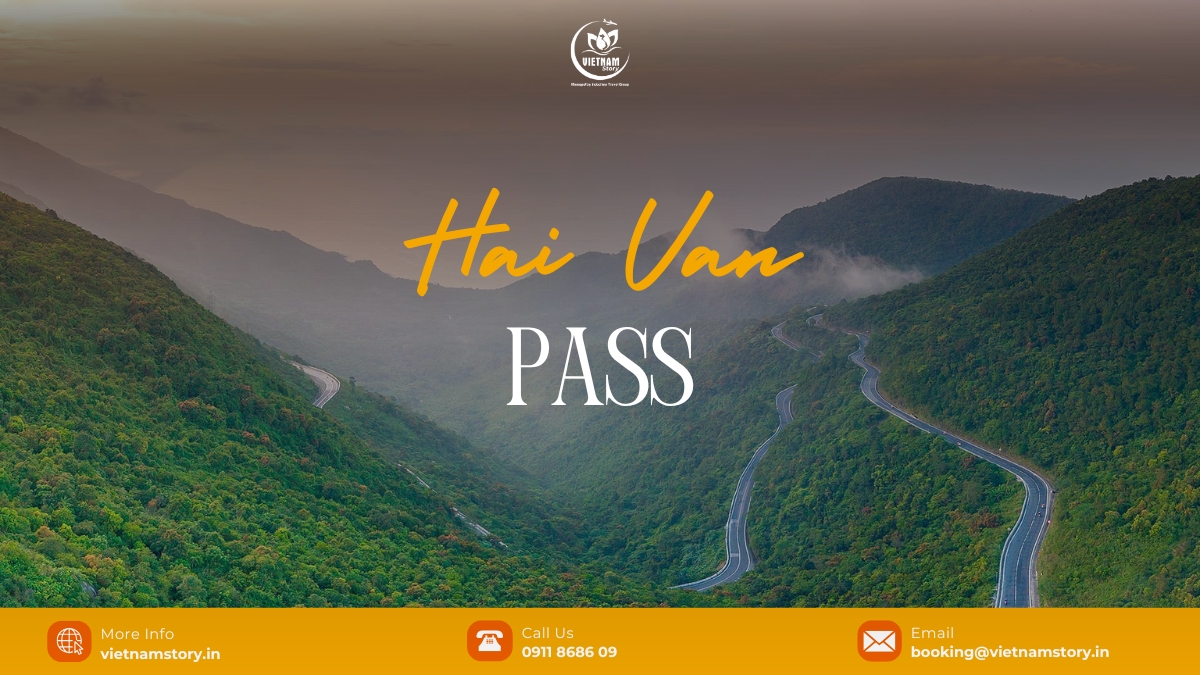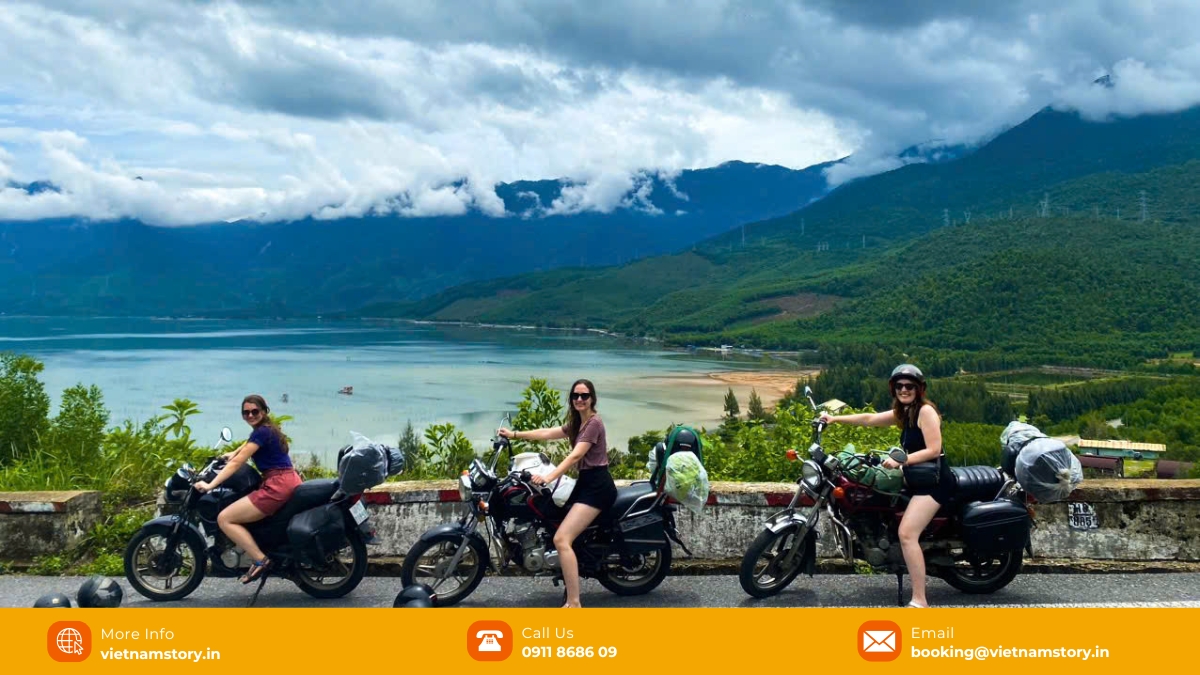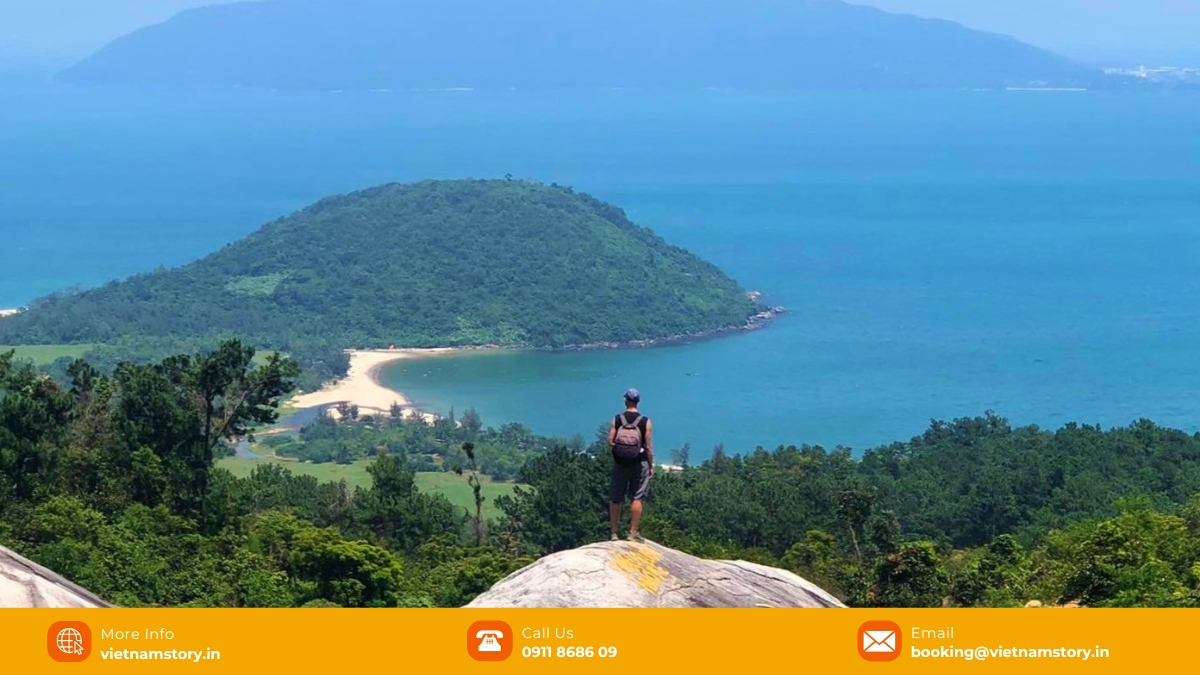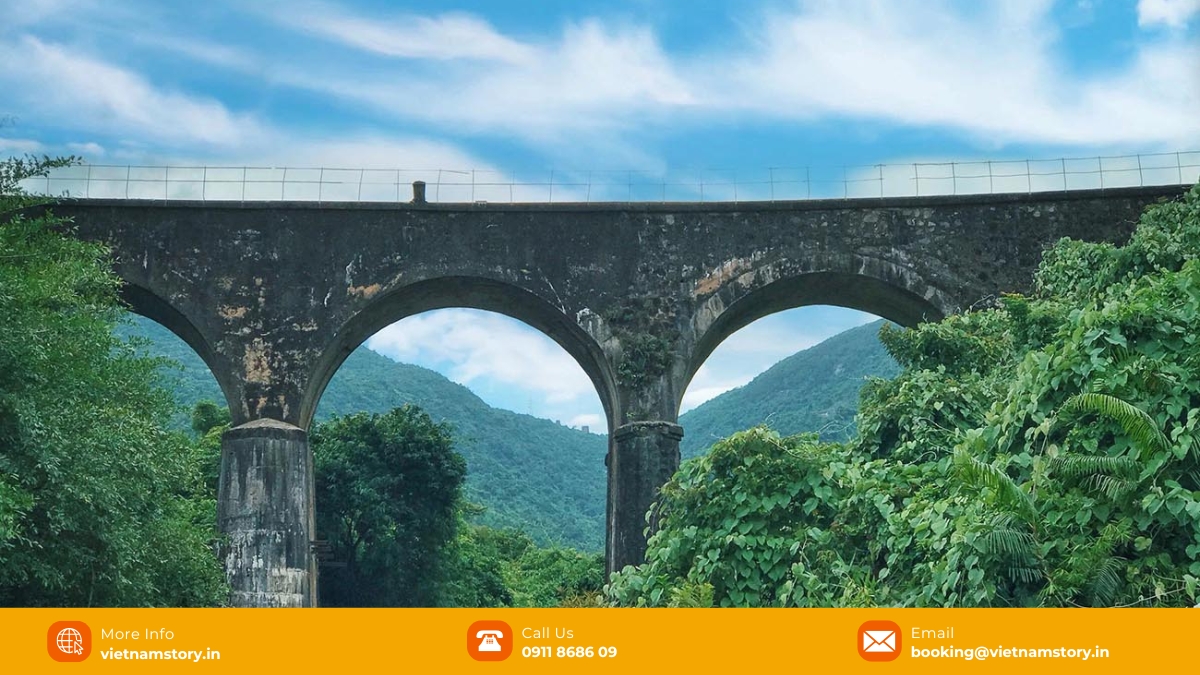Here at Vietnam Story, we understand that conquering the Hai Van Pass by motorbike is a true bucket-list item for our Indian travelers. This 21-kilometer coastal mountain road, linking Da Nang and Hue, is renowned not only for its dramatic scenery but also its profound history. As Vietnam’s trusted #1 Tour Operator for Indian visitors, this guide provides the precise data, local knowledge, and essential safety protocols you need for the most authentic and secure journey.

Discover Hai Van Pass
Key Data Points You Must Know
Hai Van Pass stretches 21 km, connecting Da Nang and Hue. With an average elevation of around 500 meters above sea level, it offers breathtaking panoramic views. Traveling the entire pass by motorbike takes approximately 4 – 5 hours of actual riding time, not including photo stops. The total distance from Da Nang to Hue via the pass is about 100 km.
Historical Significance: The Border Between Dai Viet and Champa
Hai Van Pass is more than just a scenic route — it is a significant historical landmark. For centuries, it served as the natural and strategic boundary between Dai Viet and the Kingdom of Champa. At the summit, you’ll find the Hai Van Gate (Hai Van Quan), a historic relic built during the Nguyen Dynasty by Emperor Minh Mang in the 19th century. Inscribed with the famous phrase “Thiên hạ đệ nhất hùng quan” (The most majestic gateway under heaven), Emperor Minh Mang highlighted both the grandeur and importance of this site. Today, Hai Van Gate stands as a perfect stop for travelers to admire ancient architecture and explore a proud chapter of Vietnam’s history.
READ MORE: A local’s guide to Ba Na Hills in Da Nang
The best Way to experience Hai Van Pass
The Hai Van Pass motorbike trip

While you can drive the pass in a car, the absolute best, most thrilling, and most authentic way to experience it is on a motorbike or a scooter.
- The feeling: It is a feeling of pure freedom. You can feel the wind in your face, smell the fresh mountain air, and stop whenever you want to take a photo. You are not just looking at the scenery; you are in it.
- Is it difficult? The road itself is well-paved and in good condition. However, it has many sharp, hairpin turns. This journey is only for confident and experienced motorbike riders. If you are a new rider, this is not the place to learn.
- Renting a motorbike: You can easily rent a motorbike in either Da Nang or Hue for a day. The rental cost typically ranges from 100.000 to 200.000 VND per day. Make sure to wear a proper helmet and check that the bike’s brakes and tires are in good condition. Most importantly, carefully review the legal requirements for an international driving permit before renting a motorbike.
Alternative options for non-riders
If you don’t ride a motorbike, please do not worry! You can still have this incredible experience.
- Hire an “easy rider”: This is a fantastic and very popular option. An “easy rider” is an experienced, safe, local guide who will drive the motorbike for you, while you sit comfortably and safely on the back, free to take photos and enjoy the view.
- Rent a private car: This is the most comfortable and safest option, perfect for families. You can ask your driver to stop at all the best viewpoints along the way.
The Must-Stop Hai Van Pass Viewpoints & Hidden Gems

The journey itself is the main attraction, but there are some key spots to look out for.
- The viewpoints: As you climb from the Da Nang side, there will be several spots where you can pull over and get a breathtaking view of the entire Da Nang bay and the city coastline.
- The Hai Van gate: At the very peak of the pass, you will find the ruins of an old brick gate. This was built by our Nguyen Dynasty emperors in the 19th century to mark the border between two kingdoms. It’s a historic and atmospheric spot to take a break.
- The “Lonely Pine Tree”: A famous, picturesque spot with a single pine tree that makes for a beautiful photo.
- Lang Co Bay viewpoint: As you begin to descend on the other side, you will be rewarded with one of the most stunning views in all of Vietnam: the magnificent, sweeping curve of Lang Co Bay, with its turquoise water, white sand, and a beautiful lagoon.
Beyond the popular viewpoints, Hai Van Pass hides a few lesser-known treasures waiting to be discovered:
- Don Ca Arch Bridge: Located near Hai Van North Station, this beautiful old stone-arch bridge blends harmoniously into the lush mountain landscape. It’s a perfect spot for photography enthusiasts seeking a peaceful and unique corner away from the crowds.
- The Old Radar Station: For a breathtaking 360-degree view of the entire pass, Lang Co Bay, and the Son Tra Peninsula, make your way to the Old Radar Station. This lesser-known destination offers a truly distinctive experience – and the kind of “once-in-a-lifetime” photos every traveler dreams of capturing.
Local Eateries: Lang Co Seafood & Dining Tips for Indian Travelers
When stopping by Lang Co Bay, don’t miss the chance to enjoy fresh seafood at one of the floating restaurants on the lagoon. The dishes here are prepared simply but preserve the natural sweetness of the sea.
For Indian travelers, we understand how important it is to find suitable dining options. When choosing a restaurant, ask about vegetarian or vegan dishes – most local eateries can prepare simple stir-fried vegetables or vegetarian rice upon request. Additionally, always prioritize restaurants with high hygiene standards to ensure a safe and enjoyable dining experience throughout your journey.
A perfect one-day itinerary: Da Nang to Hue (or vice versa)
The Hai Van Pass is the perfect centerpiece for a one-day road trip between Da Nang and Hue. Here is a perfect plan:
- Morning: Start from Da Nang and begin your climb up the Hai Van Pass. Stop at all the beautiful viewpoints.
- Late morning: Arrive at the beautiful Lang Co Bay. You can have a fresh seafood lunch at one of the rustic restaurants on stilts in the lagoon.
- Afternoon: Continue your journey to Hue, perhaps stopping at the beautiful Lap An Lagoon to see the oyster farms.
- Late afternoon: Arrive in the historic, imperial city of Hue.
READ MORE: Comprehensive Danang Tour: Your Ultimate Guide for Indian Travellers
Essential Safety Tips for Riding Hai Van Pass (For Indian Travelers)

- Check the weather! This is very important. The pass can be misty and foggy, especially in our rainy season (October to January). The best and clearest weather is during the dry season, from February to September. If mist occurs, immediately reduce speed and use your hazard lights.
- Safety first: If you are on a motorbike, drive slowly and carefully. Be very aware of the hairpin turns, and use your horn before a blind corner.
- Don’t rely on the tunnel: The Hai Van Tunnel is closed to motorbikes. All motorbikes must go over the pass.
- Fuel up: Make sure your bike or car has a full tank of petrol before you start. There are no petrol stations on the pass itself.
- Start early: Give yourself plenty of time to enjoy the journey. Don’t try to drive the pass in the dark.
Conclusion
Conquering the Hai Van Pass is more than just a road trip, it is an unforgettable adventure that connects you to the raw, natural beauty of Central Vietnam. It is a journey of winding roads, of ocean mists, and of spectacular views that open up before you at every turn. Whether you experience it on the back of a motorbike with the wind in your face or from the comfort of a car, the Hai Van Pass is a true rite of passage for any traveler, and it will leave you with a sense of freedom, awe, and a deep appreciation for the magnificent landscape of my country.
For those planning a trip to Hai Van Pass, the best time to visit is during the dry season (February to September) to avoid foggy conditions. Coincidentally, this period also aligns with the ideal peak travel season in many parts of India. You can explore Vietnam tours from Chennai to enjoy the warm, sunny weather and experience Vietnam’s rich culture – especially during these dry months when the climate in both countries is perfect for outdoor adventures.
For a complete and worry-free journey, let Vietnam Story be your trusted companion. Our all-inclusive tour packages feature the safest and most convenient Hai Van Pass itineraries, ensuring both comfort and adventure. Discover our services today and turn your dream of conquering Hai Van Pass into reality!
- Hotline: +84 911 868 609
- Email: booking@vietnamstory.in
Contact us now for personalized travel assistance and detailed consultation.
